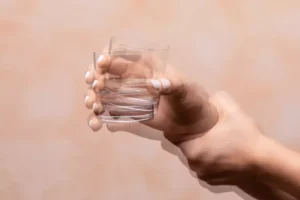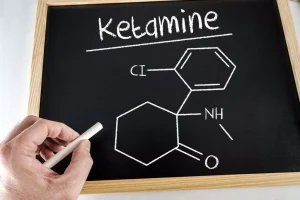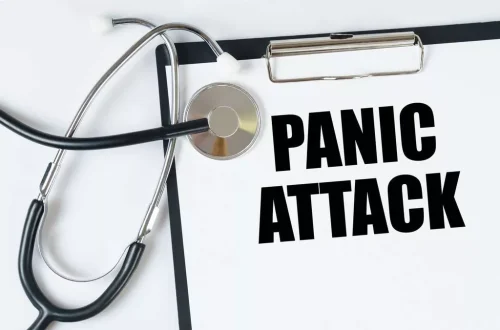Blog
Art Therapy in Addiction Recovery

Glue the phrases onto the cardboard to create a collage of positive, self-healing words. Art therapy is often considered a complementary and alternative medical (CAM) practice. This means that it is not a standalone treatment for addiction and should be used alongside other therapeutic approaches, such as CBT or a 12-step program. During this process, the https://ecosoberhouse.com/ client doesn’t create the work with their own hands but rather, guides the therapist in doing so. While instructing the therapist about what to paint, the client has an opportunity to express in words what he or she is thinking and feeling. This can be especially helpful to those that really need a supportive hand to express their innermost feelings.
Art Therapy for Drug & Alcohol Addiction Recovery
One study published by Harvard Medical School showed that not only did art therapy help prevent cognitive decline, it also provided stress relief and aided with communication, two factors that can help with emotion regulation. Researchers in a 2014 study examined data from close to 300 substance use disorder treatment centers, taking an in-depth look at how professionals treat SUDs. The researchers found that 36.8% of such programs used art therapy, demonstrating that it is an important option in many current treatment programs. In the United States, the Commission on Accreditation of Allied Health Education Programs (CAAHEP) and the American Art Therapy Association set and maintain standards for art therapy education. Another organization, the Art Therapy Credentials Board (ATCB), monitors art therapists to ensure that they provide quality, ethical care. Whether or not an individual has an artistic talent or is even interested in the arts, art therapy for drug addiction can be extremely soothing and effective.
Sets You on a Journey of Personal Discovery

Art therapy can be beneficial at all stages of the recovery journey, but the specific approaches may vary depending on where an individual is in their process. Some choose to categorize art therapists with other types of therapists, while others require licensing standards for art therapists. Containment occurs in a specific branch of art therapy called mandala art therapy, which encourages a client to confine their drawings to a circle. Whether the patient is ready to believe in themselves is not the main concern. All that’s needed to take the first step is the willingness to lead a happier, healthier life. Art therapy is a holistic treatment that provides the tools to cope with triggers like anger and loneliness.
- These can be as simple as notes on scraps of paper that mention goals the person wants to achieve or affirmations that evoke positive emotions.
- This may be because patients with severely cognitive impairment, who was unable to accurately remember or assess their own behavior or mental state, might lose the ability to enjoy the benefits of art therapy.
- These data are cross-sectional, restricting our ability to make causal arguments.
Bill Creating Transportation Services to Addiction Treatment Proposed in New York State
An art therapist’s goal is not to shape you into an award-winning artist or prepare you for a career of showing your work at various exhibits. You do not need any artistic talent to thrive in art therapy – the only prerequisite is to come with an open mind and a willingness to experiment and learn more about yourself. Whether you enjoy the simple pleasure of strolling through a gallery or you like to get hands-on and create it yourself, art can be relaxing and inspiring. Many people loved to draw, color and paint as children, but outgrew the hobby as they got older. Art therapy for addiction can help you reconnect with the joy of making something and simultaneously improve your mental well-being.

- If you or a loved one are suffering from substance abuse disorder, know that you are not alone.
- An inability to cross that bridge can keep a person in limbo during the recovery process.
- There was less denial found in their addiction, noting that making collages seemed to help them.
- Many people with SUD experience denial, and many who complete treatment are unsure regarding the work they need to do to maintain recovery.
- Often, art therapy involves activities like painting, drawing, photography, pottery, or other hands-on creative tasks.
- The goal is to enjoy the process and promote self-expression, not produce a certain product.
Indeed, many forms of art therapy have been successfully used in schizophrenia, whether and how painting may interfere with psychopathology to release symptoms remains largely unknown. One of the most poignant benefits of art therapy for those in recovery from addiction is that at times we can feel “muted” by our emotions, literally rendering us speechless. On other occasions, thoughts may be so rapid and erratic that we cannot make sense of what is truly going on. Grabbing some art materials and just drawing, painting, scribbling, or writing words on paper can help to alleviate the stress we feel inside. This means of self-expression can provide immediate release, even without sharing our artwork with anyone else. Much in the same way that some in recovery will express their feelings through poetry, art can be a valuable tool.
- In addition to the above mentioned diseases, art therapy has also been adopted in other applications.
- Art can be used as a healthy tool to both express your inner thoughts and reflect on who you are, so you don’t have to rely on the substances that once harmed you.
- Art therapy is a technique rooted in the idea that creative expression can foster healing and mental well-being.
Since then, art has become an important part of the therapeutic field and is used in some assessment and treatment techniques. Then, we manually screened out the literatures that contained the word “art” but was not relevant with the subject of this study, such as state of the art therapy, art therapy for addiction antiretroviral therapy (ART), and assisted reproductive technology (ART). Since we aimed to focus on art therapy included painting and drawing as major media, we screened out literatures deeper, and identified 413 (84%) literatures involved in painting and drawing (Figure 1).
- Finally, mechanism of art therapy should be further investigated in a variety of ways, such as at the neurological, cellular, and molecular levels.
- In many cases, it might be used in conjunction with other psychotherapy techniques such as group therapy or cognitive-behavioral therapy (CBT).
- We included all patient groups and groups receiving targeted preventive art therapy.
- Lastly, participants can feel empowered by being in control of emotions and their connection to trauma.
Additional benefits of art therapy for addiction recovery:
What Does the No Surprises Act Mean for Mental Healthcare Providers?


